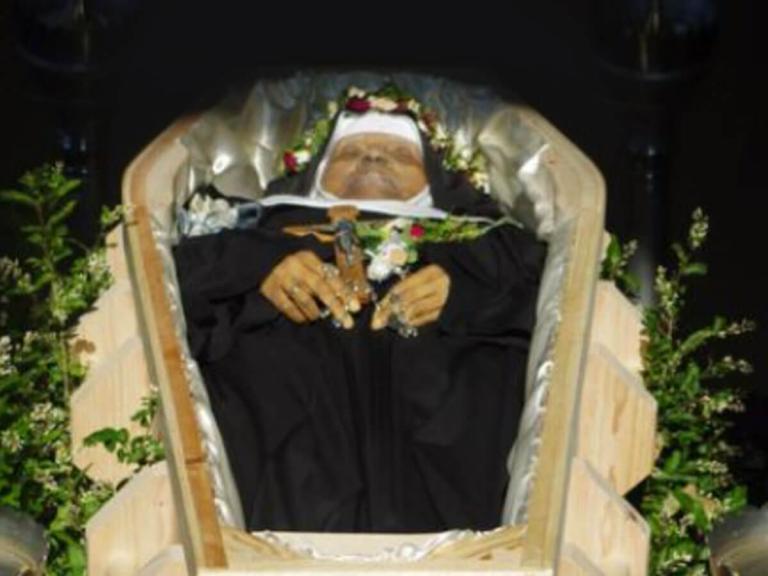
The Abbey of Our Lady of Ephesus, nestled ten minutes outside the small town of Gower, Missouri, is turning heads after speculation of an apparent miracle. This past April, the sisters of the abbey decided to exhume the body of Sister Wilhelmina Lancaster, who had died four years earlier at the age of 95. The sister was removing her body from its simple wooden coffin in order to put it in a place of honor. However, rather than a decomposing body, the sisters discovered Sister Wilhelmina’s intact remains without any signs of decomposition and an “immaculate” habit. Even more surprising about the preservation, the sister’s body had not been embalmed. Gower mortician Jack Kline, who signed Sister Wilhelmina’s death certificate four years ago, was just as surprised as everybody else. “I was kind of shocked because I have picked up loved ones, people that have laid for a couple of days,” he said. “They found them, you know, and you really can’t even get close to them. I mean, the odor and for the decomposition starting.” Despite not having been present at the exhumation, he has since examined the sister’s remains, saying, “There was no odor,” he said. He also added it was the best-preserved body he had seen in his 50 years as a mortician.
The state of Sister Wilhelmina’s body is a possible sign of being “incorruptible,” a Catholic term for those whose bodies do not decompose after death. It is significant because it is a possible qualification for sainthood. The process of sainthood is long and could take years or even centuries, but if Sister Wilhelmina were to be tracked for sainthood, she would be the first American, not to mention the first African American saint. The news brought numerous pilgrims to observe the body. Over Memorial Day weekend, the abbey experienced over 25,000 visitors. The body has since been placed in an enclosed glass box for viewing.
Sister Wilhelmina was the descendant of enslaved Catholics and spent 50 years in the Oblate Sisters of Providence, a predominantly black order. Those who knew her recalled her as fiercely faithful and funny. “I’m Sister Wil-hel-mina. I’ve a hell of a will, and I mean it!” she would say. After her 50 years with the Oblate Sisters, she began her own order, the Benedictines of Mary Queen of Apostles, in the 90s after she felt the order’s standards on dress and worship were slipping. The order continues to grow even after the passing of its founder.
Nicholas Passalacqua, a forensic anthropologist at Western Carolina University, made the case that the body’s preservation might not be that miraculous. “We just don’t have a good understanding of how bodies decompose when they’re buried in these settings,” he said. A grocery store clerk in Gower, Madeline Whitt, stated that even if the preservation is not miraculous, the questions surrounding it are. “Even if it’s not,” she said, “if it brings more people to come and question things, then it is.”
